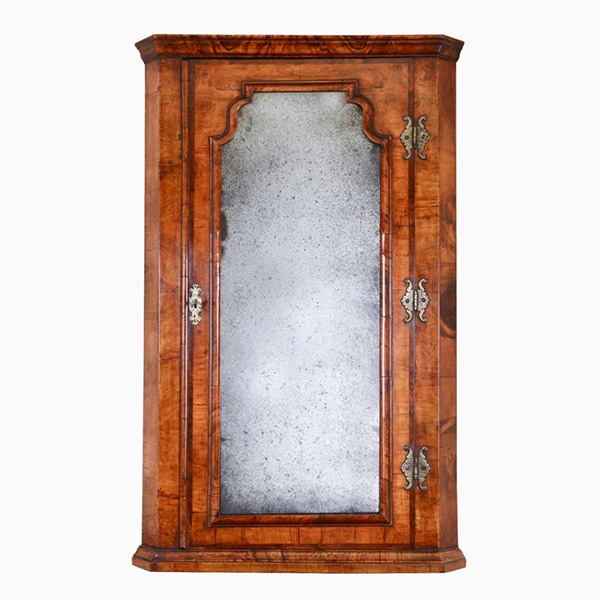William IV / Early Victorian Eight-Day Mahogany Table Clock, by Widenham, London
Sold
Request Information
Follow Us
William IV / Early Victorian Eight-Day Mahogany Table Clock, by Widenham, London
William IV/Early Victorian Table Clock by Widenham, c. 1835-40
This wonderful table clock has a spring-driven eight-day twin chain-fusee movement with going and striking trains with repetition. Unusually, it has circular plates to accommodate the case. The going train has anchor escapement with a short pendulum and stirrup regulation to facilitate adjusting the timing, which is accessible through the glazed back door. The rack striking indicates the hours of a bell, which can be repeated at all times by pulling a cord to the side of the case. The pendulum can be secured for transport with a custom made original screw.
The circular silvered brass 8″ dial is set in a beautifully engine-turned surround and has a Roman chapter ring with five-minute and minute divisions. The maker has signed the dial above and below the middle: Widenham 13 Lombard St London. The time is indicated by a fine pair of blued steel Breguet hands. It is protected by a circular glass set in a cast brass bezel, which can be locked to the side.
The mahogany-veneered oak case has a prominent base that is beautifully panelled, on which is a cylindrical part (drum head) that holds the movement with the dial. The cylindrical top seems to be mounted on a shaped support with scroll carvings. The whole rests on a substantial plain plinth.
The maker
Richard Widenham was a successful chronometer maker in London. At a young age he won the Greenwich Premium Trials in 1825. In 1830 he worked at 6 East Street in Clerkenwell and from 1835 at 13 Lombard Street. In 1832 he was appointed “Watchmaker to the Honourable Board of Admiralty” Widenham’s marine chronometers were of outstanding quality. From 1839 to 1844 he was in partnership with Thomas Adams, who was in charge of the timekeepers of Prince Albert, Queen Victoria’s husband.
Condition
Good. Wear consistent with age and use.
Dimensions
Height: 45 cm (17.72 in)
Width: 30 cm (11.82 in)
Depth: 15.5 cm (6.11 in)
Literature
Brian Loomes, Watchmakers and Clockmakers of the World, London, 2006, p. 548.
PREVIOUSLY SOLD
No Results Found
The page you requested could not be found. Try refining your search, or use the navigation above to locate the post.
No Results Found
The page you requested could not be found. Try refining your search, or use the navigation above to locate the post.
YOU MAY ALSO LIKE

Queen Anne Walnut Corner Cupboard with Bevelled Mirror Plate
A truly remarkable find in original condition. To the door a shaped soft bevelled mirror plate is framed by a cross-grain molding of typical queen Anne design which is further cross-banded, feather-banded and edged to the opening with a single de-molding.

Queen Anne Walnut Corner Cupboard with Bevelled Mirror Plate
A truly remarkable find in original condition. To the door a shaped soft bevelled mirror plate is framed by a cross-grain molding of typical queen Anne design which is further cross-banded, feather-banded and edged to the opening with a single de-molding.








